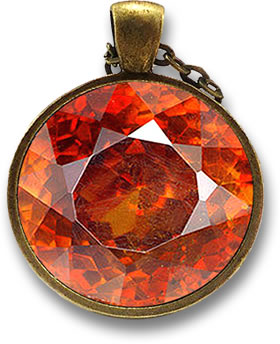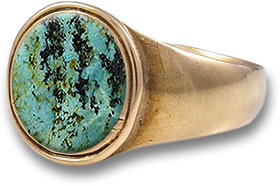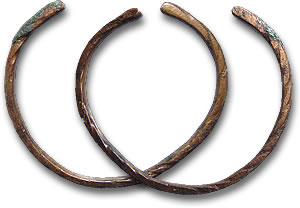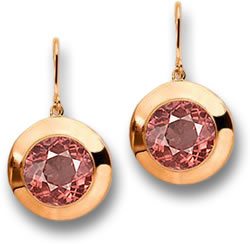|
Reviewed By Andreas Zabczyk
Brilliant Bronze Bling
Bronze Sphalerite Pendant
Bronze is an alloy that is typically composed of approximately 10% tin and around 90% copper. A similar alloy is brass, which is composed of copper and zinc. The discovery and mining of copper led to the Bronze Age. The production of bronze allowed ancient civilizations to develop trade and technology. During the Bronze Age, bronze was used for casting and it was also hammered into sheets. The malleability of bronze allowed for an amazing variety of uses. Bronze was used to make various items, such as tools, weapons, vessels and components of boats and ships. The Bronze Age was a prehistoric period that followed the Ice Age and linked the Stone Age to the Iron Age. As suggested by the name, the Bronze Age is characterized by the emergence of metal work into society. The Bronze Age occurred at different times in different parts of the world. Copper was smelted in Anatolia (the region where modern day Turkey lies) as early as 6200 BC. The Bronze Age itself is thought to have begun in Greece and China before 3000 BC and approximately 2000 BC in the UK. However, the recent discovery of a 4000-year-old dagger in Britain has cast some doubt over this. In some regions, a Copper Age preceded the Bronze Age. 
Bronze Turquoise Cabochon Ring
Apart from practical implements, such as cups, knives and plates, bronze was worked into ornaments. At the same time, gold and silver was fashioned into ornaments. During the Bronze Age, gold was a status symbol, so the most valuable jewelry from this period was gold. However, bronze was also worn as jewelry by some, probably the less wealthy members of society. Items that adorned the neck included torcs (also spelled torques), collars, beads and pendants. There were also arm rings, bracelets, rings and clothes fastenings. Some bronze jewelry items were twisted, some were coiled into a spring shape, others were hammered and flattened or rounded and smooth. Bronze jewelry in Europe was generally worn by women and was sometimes used as social indicators, not only to show wealth, but also for marital status and age. Bronze Age jewelry was also made from other materials such as amber and jet. 
Ancient Roman Bronze Bracelets
Bronze has continued to be used as a jewelry material from the Bronze Age, right through the Iron Age and up to the present day. Evidence of this has been provided by archeological sites, such as Banja e Pejës in Kosovo and an octagonal Byzantine bronze ring unearthed in Israel. Copper, bronze and brass jewelry seems to be undergoing something of a revival nowadays. This applies to both Celtic or Viking tribal style and high jewelry designs. Some gemstones are particularly suited to the warm golden color of bronze metal. For example, contrasting colors, such as turquoise, azurite and green sapphire are attractive when set in bronze jewelry. On the other hand, pink, rose, amber and champagne colors are brought out by bronze. Modern use of metals has seen the combination of silver, gold and bronze in single items, sometimes entwined or juxtaposed. Bronze is also plated with white gold, yellow gold and other precious metals. Bronze can also be mixed with other materials, such as leather and hemp. 
Rose Malaya Garnet Bronze Earrings
Bronze should be properly cared for in order to prevent corrosion of the copper. Evidence of this phenomenon can be seen on parts of buildings, such as statues or roofs containing copper alloys, which are near the sea. The copper alloys turn light-green after exposure to chlorides. Bronze jewelry should only be cleaned gently a soft, dry cloth. Some bronze contains a small amount of nickel, which can affect people with allergies. However, a thin coating of clear nail varnish can remedy this. Clear nail varnish can also prevent green areas of skin where sweat comes into contact with the copper alloy. From the Bronze Age to current times of high-technology, this brilliant material may tarnish, but with regard to fashion jewelry, it will never grow old. |
| STAY IN TOUCH | NEWSLETTER |
| *You're signing up to receive GemSelect promotional email. |
Copyright © 2005-2024 GemSelect.com all rights reserved.
Reproduction (text or graphics) without the express written consent of GemSelect.com (SETT Company Ltd.) is strictly prohibited.
2570